Home / Success Stories / EU project uses Libelium sensors to monitor ozone levels in volunteer homes
Do you want this case study in pdf?
Download it in English🇬🇧 and Spanish🇪🇸 directly to your inbox.
Download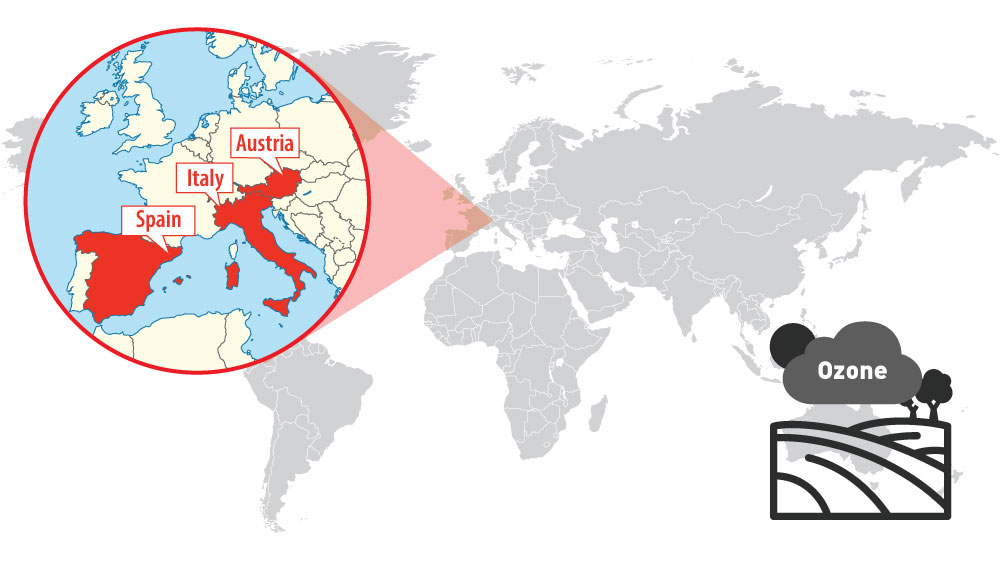
Location of Spain, Italy and Austria
The UPC (Universitat Politecnica de Catalunya) is leading the Collective Awareness Platform for Tropospheric Ozone Pollution (CAPTOR), a platform which uses Libelium’s IoT technology to monitor tropospheric ozone as well as other secondary pollutants (NOx and VOC). Ozone is a greenhouse gas, often considered the “forgotten pollutant” because its effects are felt far from the areas that cause it. But ground level ozone is primarily an air pollutant, which is of high concern in Europe.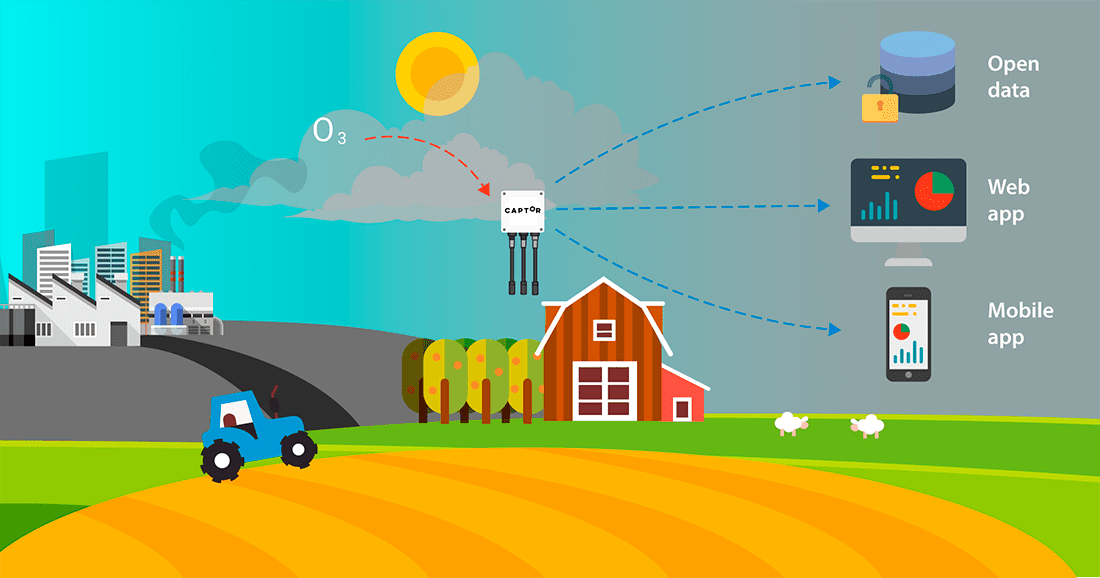
Diagram of CAPTOR project
The polluters (the urban population) do not suffer the degradation of the air quality caused by their gas emissions, whereas the rural population (which has a limited ability to control the emissions) breathes degraded air. Due to this decoupling between the sources and the effects of tropospheric ozone, it usually receives less attention than other pollutants such as particles of sulfur dioxide (SO₂) and nitrogen oxides (NOx). A network of sensors were installed to measured ozone in three affected areas:
CAPTOR web application
Libelium’s wireless sensor platform Waspmote is extraordinarily flexible and has been designed to work in many different IoT smart cities projects: measuring polluting gases levels, controlling particle pollution, light intensity levels or even noise pollution from road traffic, industry and construction. The devices, which has been inspired by Libelium’s Waspmote Plug & Sense! Smart Cities PRO line, have been managed and maintained jointly by the Institute of Environmental Diagnosis and Water Studies (IDAEA) of the Spanish National Research Council (CSIC) and the UPC.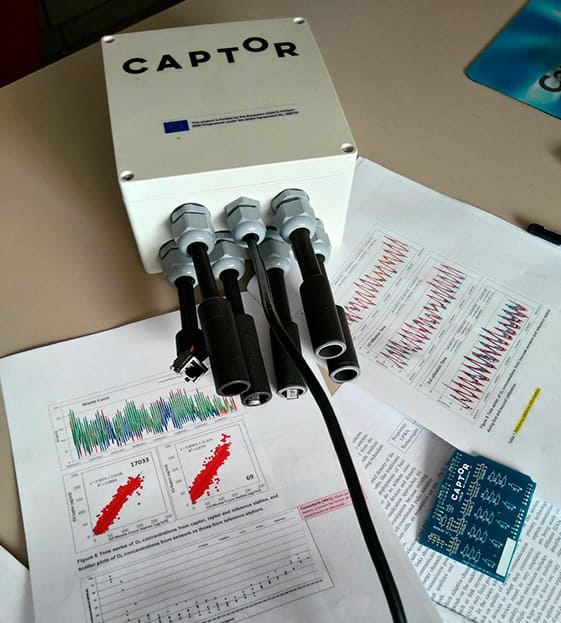
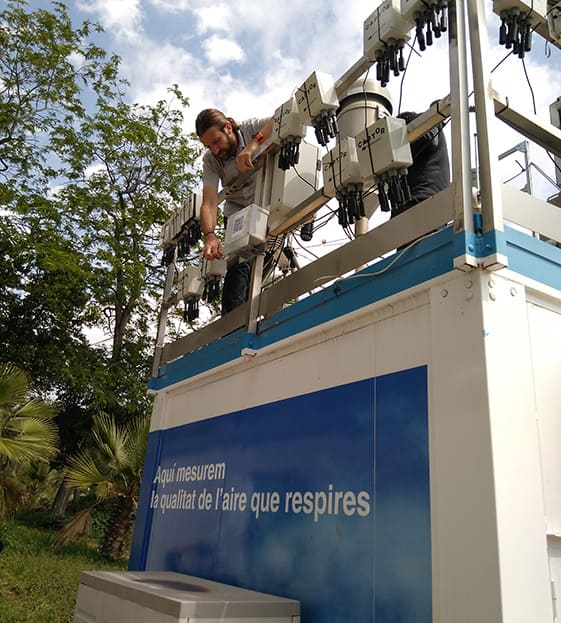
CAPTOR sensor nodes measure ozone and other pollutants
Three ozone measurement campaigns are planned for the summer period (2016-2018), when tropospheric ozone reaches the highest concentrations. In the first year, 2016, the campaign was only carried out in Spain, in order to test the system and the tools for publishing the data. In 2017 and 2018 the campaign was carried out in private houses of volunteers from three countries: Austria, Italy and Spain.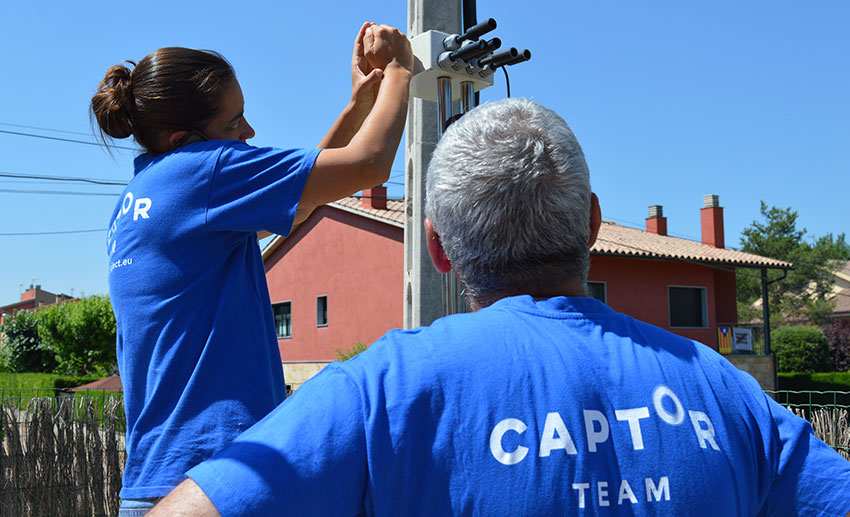
The CAPTOR team installs nodes in volunteers’ homes
In the CAPTOR project, citizens and scientists work closely together to monitor and address the problem of ozone pollution in Europe. In fact, the goal is to promote grassroots collaboration between local communities, citizens, NGOs and scientists in order to find solutions to the problem of air pollution and to reinforce the citizens’ awareness of their right to clean air.This case study helps to achieve the following Sustainable Development Goals:
More info:
References:
Download it in English🇬🇧 and Spanish🇪🇸 directly to your inbox.
Download*TERMS AND CONDITIONS TO USE LIBELIUM CONTENT. Libelium is the owner of all images provided on the website and it can only be used quoting the source. Any video, photograph, diagram, infographic or logo cannot be used or transformed without Libelium authorization. You can request the files in high resolution to publish on your website or to insert in marketing flyers always using Libelium logo and linking with Libelium website. If you are going to publish the article in a website or media or in a white paper or research study, it must be done including all the references and mentioning Libelium as the source of the content. © Libelium Comunicaciones Distribuidas S.L. – www.libelium.com
Stay up to date in IoT!
Sign up to our newsletter and receive the latest, exciting news.
More than 18 years of experience in IoT support us.


















© Libelium Comunicaciones Distribuidas S.L. | Terms And Conditions | Privacy Policy | Cookies Policy | Security Policy | Reporting Channel